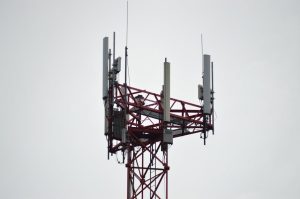
The Role of Satellites in Global Weather Forecasting Systems
The role of satellites in global weather forecasting systems is a critical one, providing vital data and imagery to help predict weather patterns and storms. Satellites have revolutionized the field of meteorology, enabling forecasters to track weather systems and make more accurate predictions. In this article, we will explore the role of satellites in global weather forecasting systems and how they have improved our ability to predict the weather.
Satellites have been used in weather forecasting for several decades, but their importance has increased significantly in recent years. With the launch of new satellite systems, such as the Geostationary Operational Environmental Satellite (GOES) and the Joint Polar Satellite System (JPSS), the amount of data available to forecasters has increased exponentially. These satellites provide high-resolution imagery and data on atmospheric conditions, including temperature, humidity, and wind patterns.
How Satellites Contribute to Weather Forecasting
Satellites contribute to weather forecasting in several ways. Firstly, they provide visible and infrared imagery of clouds and weather systems, which helps forecasters to identify and track storms. This imagery is used to monitor the movement and development of weather systems, such as hurricanes, typhoons, and blizzards. Secondly, satellites provide data on atmospheric conditions, including temperature, humidity, and wind patterns. This data is used to predict the trajectory and intensity of weather systems.
Satellites also play a critical role in monitoring severe weather events, such as hurricanes and tornadoes. By providing real-time imagery and data, satellites enable forecasters to issue timely warnings and alerts, helping to protect life and property. Additionally, satellites are used to monitor environmental phenomena, such as volcanic eruptions and wildfires, which can impact weather patterns and air quality.
Benefits of Satellites in Weather Forecasting
The use of satellites in weather forecasting has numerous benefits. Firstly, satellites provide global coverage, enabling forecasters to monitor weather patterns and storms across the globe. This is particularly important for predicting weather patterns in remote or hard-to-reach areas, where traditional weather observation systems may not be available. Secondly, satellites provide high-resolution imagery and data, enabling forecasters to make more accurate predictions.
The use of satellites in weather forecasting has also improved the accuracy of weather forecasts. By providing real-time data and imagery, satellites enable forecasters to update their forecasts more frequently, reducing the risk of errors and improving the overall accuracy of weather forecasts. Additionally, satellites have enabled the development of new weather forecasting models, such as the Global Forecast System (GFS) and the European Centre for Medium-Range Weather Forecasts (ECMWF) model, which have improved the accuracy of weather forecasts.
Conclusion
In conclusion, the role of satellites in global weather forecasting systems is a critical one, providing vital data and imagery to help predict weather patterns and storms. The use of satellites has revolutionized the field of meteorology, enabling forecasters to track weather systems and make more accurate predictions. As new satellite systems are launched and existing ones are upgraded, the amount of data available to forecasters will continue to increase, enabling even more accurate weather forecasts.





